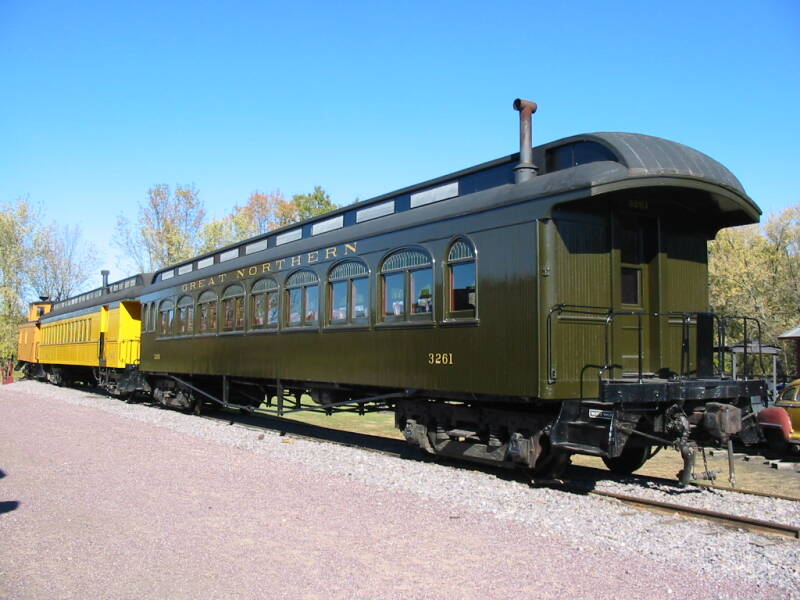Barney and Smith Car Company clerestory cars on display at the Mid-Continent Railway Museum in North Freedom, Wisconsin.
(Sean Lamb (en:User:Slambo), CC BY-SA 2.0 <https://creativecommons.org/licenses/by-sa/2.0>, via Wikimedia Commons)
CLERESTORY CAR
In architecture, a clerestory (lit. 'clear storey', also clearstory, clearstorey, or overstorey; from Old French cler estor) is a high section of wall that contains windows above eye-level. Its purpose is to admit light, fresh air, or both.
Similar structures have been used in transportation vehicles to provide additional lighting, ventilation, or headroom.
The interior of a Pullman car on the Chicago and Alton Railroad circa 1900.
(Photo by Detroit Publishing Co., Library of Congress, Public domain)
Transportation
Clerestory roofs were used on railway cars (known as "clerestory cars") from the mid-nineteenth century to the 1930s.
"Based on the principle that hot air rises, the clerestory was able to vent the hottest air out through the transoms at the top, which allowed (slightly) cooler air to enter through the side passenger windows. In an era before air-conditioning, on a hot and muggy summer day a breeze is much better than no breeze, so the clerestory improved passenger comfort considerably. The only drawback was the dust and occasional cinders that would be drawn in as well-- which may be why the very first air-conditioned railroad car was the Dining Car on Santa Fe's "DeLuxe" of 1911." - Norm Anderson
The first Pullman coaches had clerestory roofs.
The last clerestory-roofed trains in regular use were on the London Underground, the 'Q' stock, which were all withdrawn from operation in 1971.
A clarestory roof on a Chicago and Northwestern Combine Car.
(The original uploader was Slambo at English Wikipedia., CC BY-SA 2.0 <https://creativecommons.org/licenses/by-sa/2.0>, via Wikimedia Commons)








